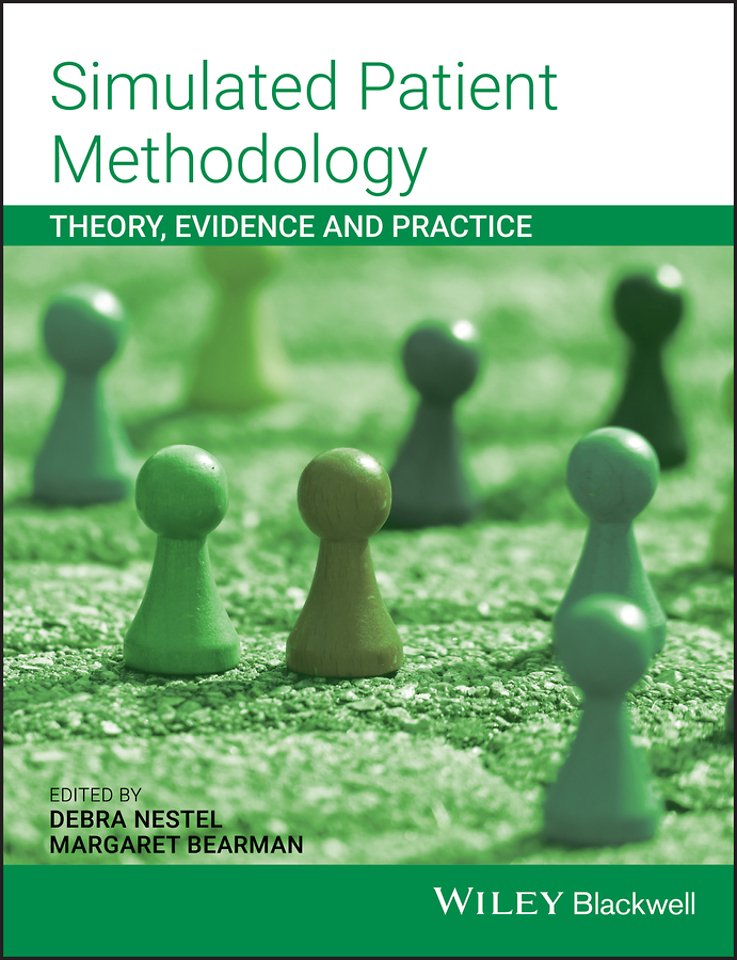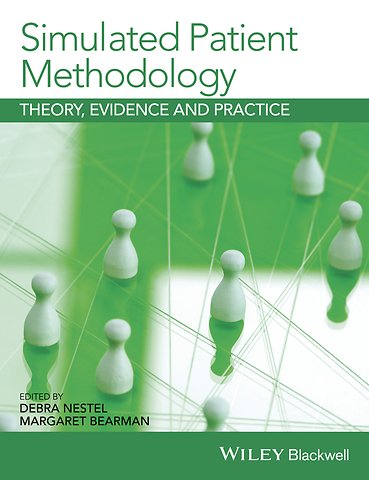Simulated Patient Methodology – Theory, Evidence and Practice
Theory, Evidence and Practice
Samenvatting
Simulated Patient Methodology is a timely book, aimed at health professional educators and Simulated Patient (SP) practitioners. It connects theory and evidence with practice to ensure maximum benefit for those involved in SP programmes, in order to inform practice and promote innovation. The book provides a unique, contemporary, global overview of SP practice, for all health sciences educators.
Simulated Patient Methodology:
Provides a cross–disciplinary overview of the field
Considers practical issues such as recruiting and training simulated patients, and the financial planning of SP programmes
Features case studies, illustrating theory in practice, drawn from across health professions and countries, to ensure relevance to localised contexts
Written by world leaders in the field, this invaluable resource summarises the theoretical and practical basis of all human–based simulation methodologies.
Specificaties
Inhoudsopgave
<p>Foreword, ix</p>
<p>1 Introduction to simulated patient methodology, 1<br /> Debra Nestel and Margaret Bearman</p>
<p>Part 1: Foundational Frameworks, 5</p>
<p>2 Scope of contemporary simulated patient methodology, 7<br /> Debra Nestel, Tracy Morrison and Shane Pritchard</p>
<p>3 The content and process of simulated patient–based learning activities, 16<br /> Jill E Thistlethwaite and George D Ridgway</p>
<p>4 Communities of practice and simulated patient methodology, 23<br /> Debra Nestel, Jan–Joost Rethans and Gayle A Gliva–McConvey</p>
<p>Part 2: Theoretical Perspectives, 31</p>
<p>5 Learning theories and simulated patient methodology, 33<br /> Margaret Bearman and Debra Nestel</p>
<p>6 The dramatic arts and simulated patient methodology, 39<br /> Cathy M Smith, Tanya L Edlington, Richard Lawton and Debra Nestel</p>
<p>7 Simulated interaction and authentic interaction a place for conversation analysis?, 46<br /> Ged M Murtagh</p>
<p>8 Simulated patient methodology and the discourses of health professional education, 53<br /> Nancy L McNaughton and Brian Hodges</p>
<p>Part 3: Educational Practice, 61</p>
<p>9 Preparation: developing scenarios and training for role portrayal, 63<br /> Debra Nestel, Carol Fleishman and Margaret Bearman</p>
<p>10 Simulated patients as teachers: the role of feedback, 71<br /> Debra Nestel, Margaret Bearman and Carol Fleishman</p>
<p>11 Teaching and learning physical examination skills with simulated patients, 79<br /> Anna K Vnuk</p>
<p>12 Simulated patient methodology and assessment, 85<br /> Cathy M Smith, Carol C O Byrne and Debra Nestel</p>
<p>13 Simulated patient programme management, 93<br /> Tanya Tierney, Elaine E Gill and Pamela J Harvey</p>
<p>Part 4: Case Studies: Innovations Across the Health Professions, 103</p>
<p>14 Real patient participation in simulation, 105<br /> Rosamund Snow</p>
<p>15 Interprofessional community care: a simulated clinic for healthcare professional learners, 110<br /> Pamela J Taylor, Mollie Burley and Debra Nestel</p>
<p>16 Telephone incognito simulated patients, 115<br /> Jan–Joost Rethans and Hay Derkx</p>
<p>17 Hybrid simulated patient methodology: managing maternal deterioration, 120<br /> Simon JR Cooper and Mary Anne Biro</p>
<p>18 Learning intimate examinations: the specialist role of Gynaecological Teaching Associates, 126<br /> Karen M Reynolds, Jim Parle and Shirin Irani</p>
<p>19 Advanced nursing practice in aged care: developing communication and management skills in patients with Alzheimer s disease, 130<br /> Jennifer H Fisher, Jane H Kass–Wolff, Ernestine Kotthoff–Burrell and Jeanie M Youngwerth</p>
<p>20 Skills development in person–centred physiotherapy, 134<br /> Felicity C Blackstock and Shane Pritchard</p>
<p>21 Simulated family and healthcare professionals: consent for organ transplantation, 139<br /> Gayle A Gliva–McConvey</p>
<p>Part 5: Conclusion, 145</p>
<p>22 The future of simulated patient methodology, 147<br /> Margaret Bearman and Debra Nestel</p>
<p>Index, 151</p>

